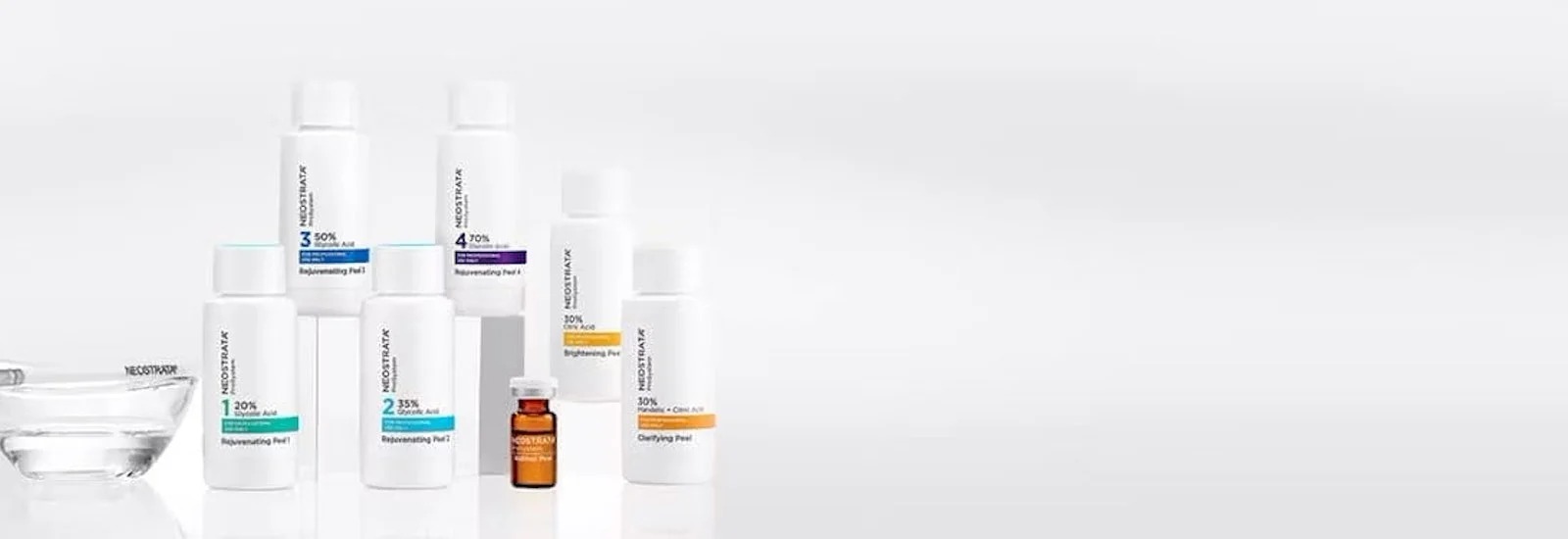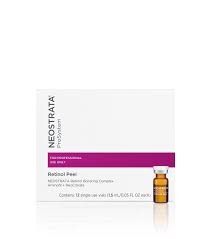Skincare science has made remarkable advancements in offering targeted solutions for common concerns like aging, dullness, acne, and uneven skin tone. Among the most effective treatments available are chemical peels, with glycolic acid peels and retinol peels being two of the most popular options. These treatments are praised for their ability to deliver smoother, brighter, and younger-looking skin through exfoliation and cell renewal.
But how exactly do glycolic acid and retinol peels work, and what makes them so effective? This article dives deep into the mechanisms behind these treatments, their benefits, and why they have become essential tools in skincare routines worldwide.
What Are Chemical Peels?
Chemical peels are treatments that use acids or other active ingredients to exfoliate the skin by removing its outermost layers. This process promotes cell turnover, revealing fresh, healthy skin underneath. Peels are classified into three main categories based on their depth of penetration:
- Superficial Peels: Target the epidermis (outermost layer). Suitable for mild exfoliation.
- Medium Peels: Penetrate the upper dermis to address deeper concerns like pigmentation and fine lines.
- Deep Peels: Reach the lower dermis and treat significant skin damage and aging signs.
Glycolic acid peels and retinol peels typically fall into the superficial to medium peel category, depending on their concentration and formulation.
Glycolic Acid Peels: Mechanism and Benefits
What Is Glycolic Acid?
Glycolic acid is an alpha hydroxy acid (AHA) derived from sugarcane. It has the smallest molecular size among AHAs, which allows it to penetrate the skin deeply and effectively. Glycolic acid primarily works as an exfoliant, breaking down the bonds between dead skin cells and encouraging their removal.
How Does a Glycolic Acid Peel Work?
- Exfoliation: Glycolic acid dissolves the “glue” that holds dead skin cells together on the epidermis. This process removes the dull, damaged outer layer of skin.
- Cell Turnover: By stimulating the natural shedding of skin cells, glycolic acid enhances cell regeneration, bringing new, healthy cells to the surface.
- Collagen Stimulation: At deeper concentrations, glycolic acid penetrates into the dermis and stimulates fibroblasts to produce collagen, improving skin firmness and elasticity.
- Skin Hydration: Unlike harsher exfoliants, glycolic acid has humectant properties, meaning it draws moisture into the skin.

Benefits of Glycolic Acid Peels
- Brighter and Smoother Skin: By removing dead skin cells, glycolic acid reveals fresh skin that looks smoother, more radiant, and youthful.
- Reduces Hyperpigmentation: Glycolic acid fades dark spots, melasma, and post-inflammatory hyperpigmentation by promoting an even skin tone.
- Improves Fine Lines and Wrinkles: Regular peels stimulate collagen production, reducing the appearance of fine lines and wrinkles over time.
- Treats Acne and Breakouts: By keeping pores clear and preventing the buildup of dead cells and excess oil, glycolic acid reduces acne and prevents future breakouts.
- Enhances Product Absorption: Post-peel, the skin is better able to absorb active ingredients in serums and moisturizers, maximizing their effectiveness.
Who Should Use Glycolic Acid Peels?
Glycolic acid peels are suitable for most skin types, especially those dealing with:
- Dull, rough skin.
- Hyperpigmentation and dark spots.
- Fine lines and early signs of aging.
- Acne and clogged pores.
Precaution: Those with extremely sensitive skin, eczema, or rosacea should consult a dermatologist before using glycolic acid, as it may cause irritation.
Retinol Peels: Mechanism and Benefits
What Is Retinol?
Retinol is a derivative of vitamin A and belongs to the retinoid family. It is a powerhouse ingredient widely used in skincare for its ability to accelerate cell turnover, boost collagen production, and reverse visible signs of aging. Retinol works at a deeper level than glycolic acid, targeting the skin’s structure for long-term rejuvenation.
How Does a Retinol Peel Work?
- Cellular Renewal: Retinol stimulates the production of new skin cells, shedding old and damaged ones. This process improves the skin’s texture and reduces roughness.
- Collagen Production: Retinol penetrates the dermis, where it activates fibroblasts to produce collagen and elastin, strengthening the skin’s structure.
- Exfoliation Without Surface Irritation: Unlike AHAs, retinol does not dissolve dead cells directly on the surface. Instead, it accelerates the skin’s natural exfoliation process over time.
- Regulation of Oil Production: Retinol balances sebum production, reducing clogged pores and preventing breakouts.
Benefits of Retinol Peels
 Reduces Fine Lines and Wrinkles: By boosting collagen and accelerating cell turnover, retinol softens fine lines and wrinkles, improving overall skin firmness.
Reduces Fine Lines and Wrinkles: By boosting collagen and accelerating cell turnover, retinol softens fine lines and wrinkles, improving overall skin firmness.- Improves Skin Tone and Texture: Retinol fades dark spots, sun damage, and uneven skin tone, leading to a smoother, brighter complexion.
- Treats Acne and Scarring: Retinol unclogs pores, reduces breakouts, and minimizes the appearance of acne scars over time.
- Reverses Sun Damage: Retinol repairs damage caused by UV exposure, including hyperpigmentation and photoaging.
- Long-Term Results: Unlike surface-level exfoliants, retinol works deeper in the skin, providing long-term rejuvenation and anti-aging benefits.
Who Should Use Retinol Peels?
Retinol peels are ideal for individuals experiencing:
- Fine lines, wrinkles, and loss of elasticity.
- Uneven skin tone and dark spots.
- Acne, clogged pores, and post-acne marks.
Precaution: Retinol can cause initial dryness, redness, and peeling as the skin adjusts. It also makes the skin more photosensitive, so daily sunscreen use is essential. Those with sensitive or highly reactive skin should start with lower concentrations and consult a professional before treatment.
How Glycolic Acid and Retinol Peels Compare
While both glycolic acid and retinol peels are effective, their mechanisms and benefits differ:
| Aspect | Glycolic Acid Peel | Retinol Peel |
| Mechanism | Exfoliates the surface of the skin. | Accelerates cell turnover deep within the skin. |
| Target Concerns | Dullness, rough texture, pigmentation, acne. | Wrinkles, aging signs, acne, sun damage. |
| Time for Results | Immediate brightness; smoother skin. | Gradual improvement over weeks. |
| Depth of Penetration | Superficial to medium. | Medium to deeper layers. |
| Sensitivity | May cause mild irritation. | Can cause initial peeling, dryness. |
Combining Glycolic and Retinol Peels
Glycolic acid and retinol peels can be used in combination for enhanced results, but they should not be applied at the same time to avoid over-exfoliation and irritation. A professional skincare provider can create a treatment plan alternating between these peels to target multiple concerns, such as pigmentation, aging, and acne.
Precautions and Aftercare for Peels
- Sun Protection: Always use broad-spectrum sunscreen after chemical peels to protect the skin from UV damage.
- Hydration: Use gentle, hydrating products to soothe the skin post-peel.
- Avoid Over-Exfoliation: Do not combine strong acids or retinoids with peels on the same day.
- Consult a Professional: For higher concentrations of peels, professional supervision ensures safe and effective results.
Conclusion
Both glycolic acid peels and retinol peels offer transformative benefits, targeting a range of skin concerns from dullness and pigmentation to wrinkles and acne. While glycolic acid works on the skin’s surface to provide immediate exfoliation and brightness, retinol penetrates deeper to stimulate cell renewal and collagen production for long-term rejuvenation. By understanding their mechanisms, benefits, and proper use, these treatments can become powerful tools for achieving healthier, glowing, and youthful skin. Whether used individually or in combination, glycolic acid and retinol peels can unlock your skin’s full potential, making them indispensable in modern skincare routines.

